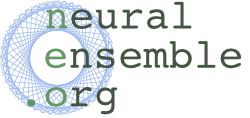We are pleased to announce the first release of the Elephant toolbox for the analysis of neurophysiology data.
Elephant builds on the Python scientific stack (NumPy, SciPy) to provide a set of well-tested analysis functions for spike train data and time series recordings from electrodes, such as spike train statistics, power spectrum analysis, filtering, cross-correlation and spike-triggered averaging. The toolbox also provides tools to generate artificial spike trains, either from stochastic processes or by controlled perturbations of real spike trains. Elephant is built on the Neo data model, and takes advantage of the broad file-format support provided by the Neo library. A bridge to the Pandas data analysis library is also provided.
Elephant is a community-based effort, aimed at providing a common platform to test and distribute code from different laboratories, with the goal of improving the reproducibility of modern neuroscience research. If you are a neuroscience researcher or student using Python for data analysis, please consider joining us, either to contribute your own code or to help with code review and testing.
Elephant is the direct successor to NeuroTools and maintains ties to complementary projects such as OpenElectrophy and SpykeViewer. It is also the default tool for electrophysiology data analysis in the Human Brain Project.
As a simple example, let's generate some artificial spike train data using a homogeneous Poisson process:
from elephant.spike_train_generation import homogeneous_poisson_process
from quantities import Hz, s, ms
spiketrains = [
homogeneous_poisson_process(rate=10.0*Hz, t_start=0.0*s, t_stop=100.0*s)
for i in range(100)]
and visualize it in Matplotlib:
import matplotlib.pyplot as plt
import numpy as np
for i, spiketrain in enumerate(spiketrains):
t = spiketrain.rescale(ms)
plt.plot(t, i * np.ones_like(t), 'k.', markersize=2)
plt.axis('tight')
plt.xlim(0, 1000)
plt.xlabel('Time (ms)', fontsize=16)
plt.ylabel('Spike Train Index', fontsize=16)
plt.gca().tick_params(axis='both', which='major', labelsize=14)
plt.show()
Now we calculate the coefficient of variation of the inter-spike interval for each of the 100 spike trains.
from elephant.statistics import isi, cv
cv_list = [cv(isi(spiketrain)) for spiketrain in spiketrains]
As expected for a Poisson process, the values cluster around 1:
plt.hist(cv_list)
plt.xlabel('CV', fontsize=16)
plt.ylabel('count', fontsize=16)
plt.gca().tick_params(axis='both', which='major', labelsize=14)
plt.show()

Elephant builds on the Python scientific stack (NumPy, SciPy) to provide a set of well-tested analysis functions for spike train data and time series recordings from electrodes, such as spike train statistics, power spectrum analysis, filtering, cross-correlation and spike-triggered averaging. The toolbox also provides tools to generate artificial spike trains, either from stochastic processes or by controlled perturbations of real spike trains. Elephant is built on the Neo data model, and takes advantage of the broad file-format support provided by the Neo library. A bridge to the Pandas data analysis library is also provided.
Elephant is a community-based effort, aimed at providing a common platform to test and distribute code from different laboratories, with the goal of improving the reproducibility of modern neuroscience research. If you are a neuroscience researcher or student using Python for data analysis, please consider joining us, either to contribute your own code or to help with code review and testing.
Elephant is the direct successor to NeuroTools and maintains ties to complementary projects such as OpenElectrophy and SpykeViewer. It is also the default tool for electrophysiology data analysis in the Human Brain Project.
As a simple example, let's generate some artificial spike train data using a homogeneous Poisson process:
from elephant.spike_train_generation import homogeneous_poisson_process
from quantities import Hz, s, ms
spiketrains = [
homogeneous_poisson_process(rate=10.0*Hz, t_start=0.0*s, t_stop=100.0*s)
for i in range(100)]
and visualize it in Matplotlib:
import matplotlib.pyplot as plt
import numpy as np
for i, spiketrain in enumerate(spiketrains):
t = spiketrain.rescale(ms)
plt.plot(t, i * np.ones_like(t), 'k.', markersize=2)
plt.axis('tight')
plt.xlim(0, 1000)
plt.xlabel('Time (ms)', fontsize=16)
plt.ylabel('Spike Train Index', fontsize=16)
plt.gca().tick_params(axis='both', which='major', labelsize=14)
plt.show()

Now we calculate the coefficient of variation of the inter-spike interval for each of the 100 spike trains.
from elephant.statistics import isi, cv
cv_list = [cv(isi(spiketrain)) for spiketrain in spiketrains]
As expected for a Poisson process, the values cluster around 1:
plt.hist(cv_list)
plt.xlabel('CV', fontsize=16)
plt.ylabel('count', fontsize=16)
plt.gca().tick_params(axis='both', which='major', labelsize=14)
plt.show()

